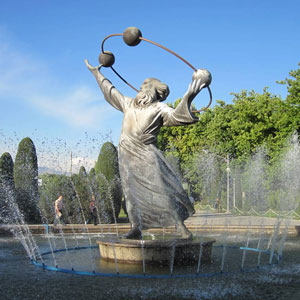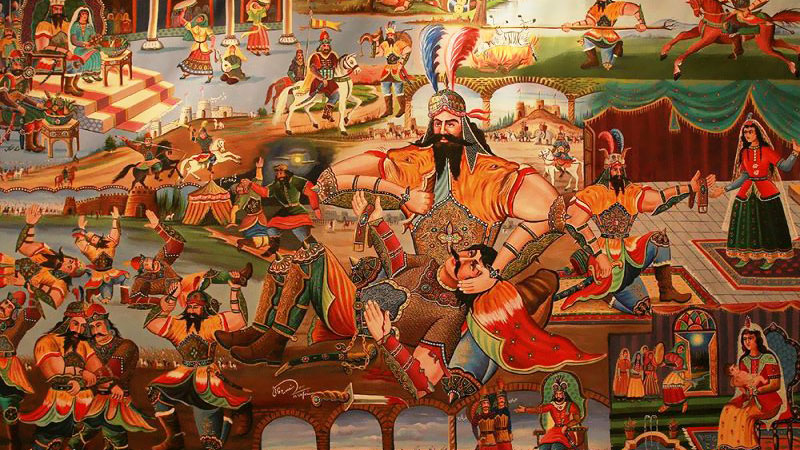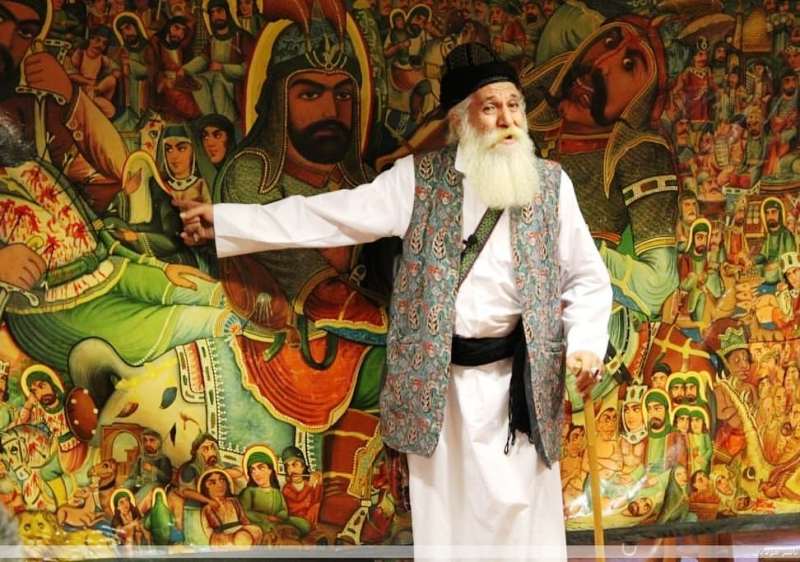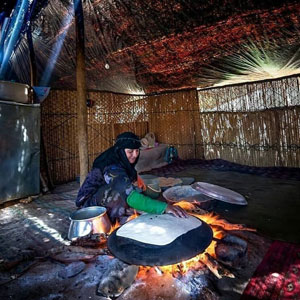 Signin with Google
Signin with Google Signin with Facebook
Signin with Facebook

 Culture,History,Literature
Culture,History,LiteratureShahnameh, the Longest Epic Poem, the Persian Odyssey

“When the baby was born with white hair, his father, who have long waited for having a son and an heir named him "Zal" and associated the little baby’s weird appearance with evil and abandoned him in the foothills of Alborz Mountains. The deserted infant was then found by the Simurgh (the giant mythical bird) and taken to its nest on the summit of a mountain. Simurgh took the best care of Zal for a long time. Years later, the once rejected little boy, became one of the greatest warriors of his time and the King of one of the most powerful kingdoms of the ancient world”.
What you read above, is not a missed season of G.O.T, or Lord of the Rings, It is a brief summary of one of the thousands of fascinating tales of “The Persian Book of Kings” or as called in Persian “Shahnameh”.
The Redeemer of Persian Language
When the Great Ancient Persian Empire, that once was the ruler of almost half of the world, was invaded by its Arab neighbours, not only did it give up its cities to the Arabs, but most importantly was on the edge of losing its rich cultural and ancient history to the invaders. It was in such a crucial and chaotic situation, where one of the main pillars of the Persian Culture, the “Persian language” was in danger of extinction and in desperate need of a saviour that a national literary hero emerged. A great Persian Poet, known as Abul Qasim Ferdowsi. He is the author of “Shahnameh” (The Book of Kings), the world’s longest epic poem which is of great importance in the preservation of Persian cultural heritage as it is almost written in pure Persian and contains more than 50,000 couplets.
From the Mythical Creation of the World to the fall of the Persian Empire
According to what Ferdowsi himself said, it took him 30 years of hardship to write this Epic of Persian Kings and revive the Persian language. The book starts with the legendary story of the Creation of the world and the first King (man), Gayomart or Keyumars in the native dialect, and is followed by the accounts of other kings to the fall of the last Persian King and the Arab conquest of Persia. “Shahnameh” is a collection of fascinating tales about Persian kings, lovers, knights, battles, giant demons, mythical creatures, and human tragedies. The book is divided into three main parts: The Mythical Age, The Heroic Age and the Historical Age.
The Creation of the world through the Eyes of Ancient Persians
Although there are various narratives about the beginning of the world in different cultures and religions, you can find one of the most alluring versions, narrated by Ferdowsi in the Mythical Age of “Shahnameh”. It starts with verses in praise of God and wisdom and then tells the story of the creation of the universe and the first man (King) as believed by Sassanians. In this section of “Shahnameh” along with recounting the stories of some of the Persian Kings such as Tahmures, Jamshid, Fereydoun and mythical heroes like Kaveh the Blacksmith, the author provides fascinating information about the formation of Persian civilization, like how fire and the iron were discovered, armaments such as swords and armours were invented and people learnt to sail ships. Furthermore, this part of “Shahnameh” is like an encyclopedia of pre-Islamic Persian culture, as it talks about the ancient Iranian traditions and ceremonies like the Nowruz celebration (the Persian New Year),
Sadeh festival and other Zoroastrian and Achaemenid rituals.
The odyssey of Persia
The longest part of “Shahnameh” is devoted to the most remarkable heroes and tragic stories. It includes some of the most famous epic tales like the love story of
Zal and Roudabeh who gave birth to the most legendary hero of “Shahnameh” named “Rustam” and the adventurous tale of his Seven Labors (Haft Khan-e Rustam in Persian) starting with liberating Kay Kavus’s army from the Divs (demons, supernatural dangerous creatures) and continues to the seventh labour in which he overthrows and kills the White-Demon (Div-e Sepid) that its blood helps Kay Kavus to restore his eyesight.
Moreover, this portion of “Shahnameh” contains one of the most tragic tales of literature, the tragedy of Rustam and his son Sohrab, in which Sohrab was killed in a battle by his own father who was unaware of his son’s existence. The national heroes are perpetuated with the powerful stories f Shahnameh, heroes like Arash the Archer as the symbol of sacrifice and Siyavush, the figure of purity in the Persian culture. What makes the heroic age of “Shahnameh” the most enthralling part of it, is the proficiency of the author in telling the stories with such a vivid and impressive description that engages the reader to a level that they feel themselves participating in the events.
The fall of the Persian Empire
Although the Heroic Age of “Shahnameh” includes heartbreaking stories, the Historic Age of this book might be the saddest part of it, specifically for the Iranian
reader, since it is mainly about the fall of the last Persian dynasty, the Sassanids and the Arab conquest of Persia. The great poet narrates this part in such a romantic yet grieving tone that has risen from his love of homeland and deep patriotic feelings.
The Immortal Heritage
It has been 1000 years since “Shahnameh” was written. Many kings have come and gone in Persia, their kingdoms have expanded and narrowed, they have won or lost wars, cities have been ruined and built and many things have changed in this ancient land, but “Shahnameh” remained intact and original during all these years, it is like a treasure that becomes worthier by the passage of time. Many Iranians know its stories by heart and recite it at special celebrations and festivals such as “Charshanbeh Souri” or “Yalda Night”, they go through its pages to name their children after its legendry heroes and great kings, it is also taught in schools and several theatrical plays, movies and operas were made based on its stories. There are different nomadic tribes in Iran who consider themselves as the descendant of a specific hero in Shahnameh, honoured to be named after this hero particularly.
And finally, it is no exaggeration to say that it is a sacred book among Iranians as it holds records of their valuable national heritage which could have been totally
forgotten and annihilated if “Shahnameh” had not been written.

Shahnameh and the dramatic literature
The dramatic literature of Iran is deeply influenced by the Shahnameh where its epics soon caused the oldest form of Iranian dramatic performance to be born in the name of Naqqali in teahouses, gatherings and historic places. Naqqali is a unique form of story-telling in which the performer or Naqqal recounts the stories of folk-tales and ethnic epics with the help of folk music in verse or prose using his/her body gestures to describe a painted scroll accompanied by the great talent of retention and improvisation. This single performing theatre was the important transmitter of Iranian ancient culture to the ordinary or illiterate people and such a great preserver of folk-tales and mythology of the country. That is why Naqqali dramatic performance is on the list of UNESCO's intangible cultural heritages which is inscribed in 2011 as an endangered heritage to be safeguarded.
By Nazanin Moayed / TassteIran

